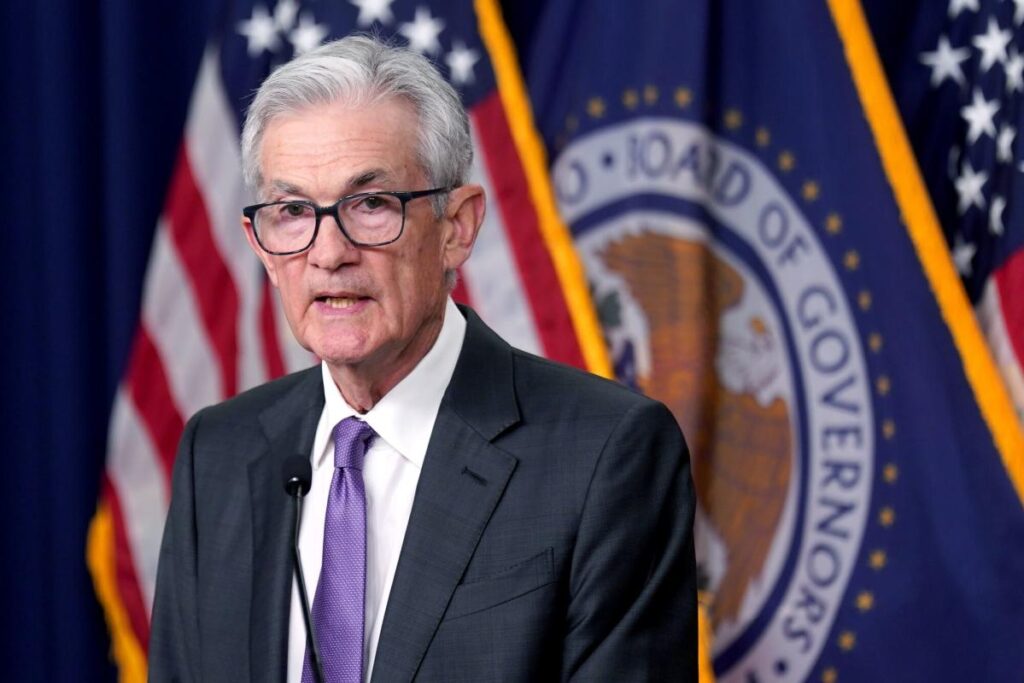In a recent press conference following the decision of the Federal Reserve to reduce interest rates, Chair Jerome Powell stated that he would not resign from his position even if requested to do so by a re-elected Donald Trump. This firm response came after the Fed’s decision to cut interest rates by a quarter percentage point, following a significant half-point reduction in September. Powell asserted that both the removal and demotion of Fed leaders, including himself, are prohibited by law. He emphasized that any upcoming presidential election would not influence the Fed’s policy decisions, asserting it was premature to speculate on future fiscal policy adjustments.
The Federal Reserve’s decision to lower the federal funds rate to a range of 4.5% to 4.75% underscores their strategy to sustain the economic expansion in the face of uncertainties. Powell remarked that this adjustment would protect the economy’s strength, bolster the labor market, and facilitate progress in reaching the Fed’s inflation targets. Trump’s recent re-election raised questions about Powell’s future, given Trump’s history of criticizing the Fed chair and hinting during his previous term at possibly replacing him. Trump has also expressed intentions to enforce stricter tariffs, control immigration, and extend tax cuts, all policies that may contribute to elevated prices and long-term interest rates.
In a recently released statement, the Federal Open Market Committee conveyed that the risks associated with achieving employment and inflation goals are now seen as balanced. The committee noted the “uncertain” economic outlook and indicated their vigilance regarding risks affecting both sides of their dual mandate. They acknowledged that while inflation has progressed towards their targets, there is no longer a firm declaration regarding achieving “greater confidence” in sustainable movement towards the 2% inflation goal. The Fed’s revised assessment of the labor market reflects some easing conditions, although Powell characterized it as “solid” with a steady but increased unemployment rate.
The economic landscape paints a picture of resilience, with the U.S. economy recording a robust annual growth rate of 2.8% in the third quarter, largely propelled by strong consumer spending. However, caution remains due to signs of cooling in the labor market. While U.S. employers added only a modest 12,000 jobs in October due to inclement weather and significant strikes, previous monthly figures were also revised downward. Despite substantial easing in inflation over recent years, the progress toward stabilization remains uneven, with measures indicating a slight rise to 2.1% in inflation rates in September, a marginal amount above the Fed’s target.
Market reactions to the Fed’s decisions have been notable, with traders anticipating the quarter-point interest cut as a certainty in the current climate. Futures markets also reflect a high likelihood of another similar cut in December. As interest rates fluctuate, Treasury yields have experienced a marked increase, which has resulted in rising mortgage rates that negatively impact a cooling housing market. In the aftermath of Trump’s electoral victory, the S&P 500 index surged to a record high, showcasing investor optimism despite the concurrent uncertainties in the economic landscape.
As Powell and the Federal Reserve navigate these complex economic conditions, their commitment to measured and cautious strategies remains evident. Moving forward, the Fed appears more inclined towards careful adjustments rather than aggressive cuts, indicating an intent to maintain leverage over economic stabilization efforts. Powell’s historical resilience in the face of political pressures reinforces the Fed’s independence as it strives to balance its dual mandates of promoting maximum employment and ensuring price stability amidst evolving political and economic landscapes.

